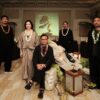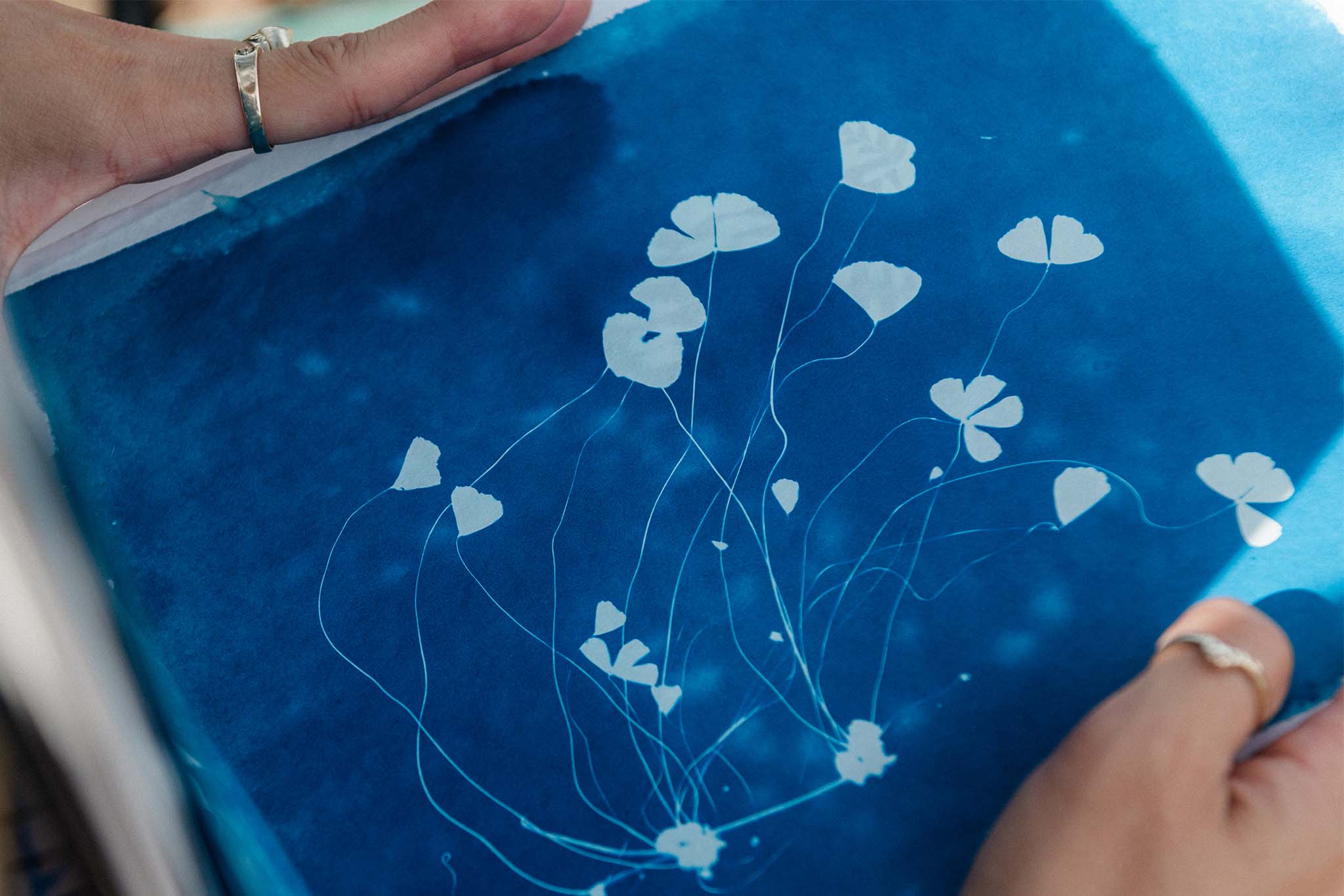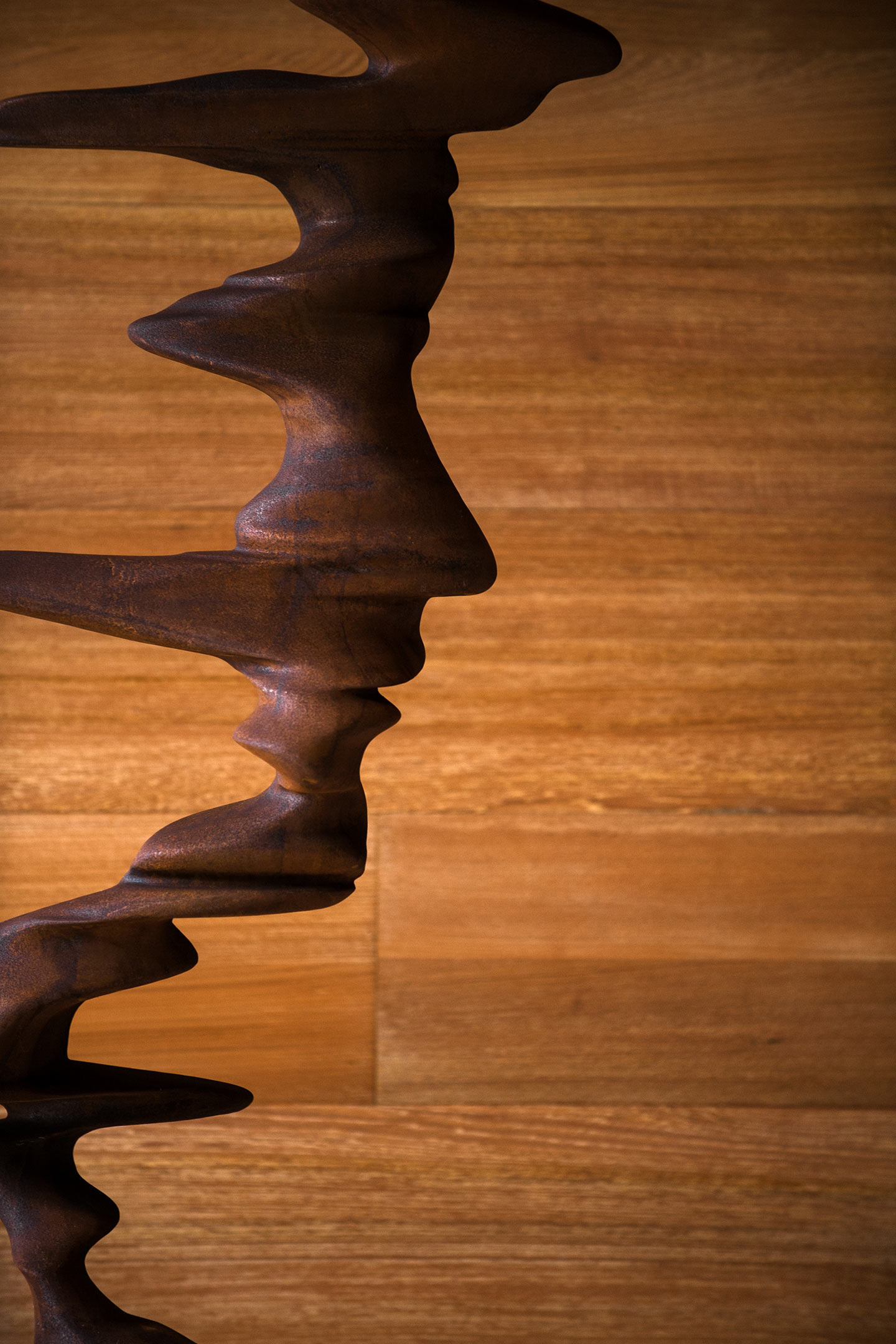Text by Natalie Schack
Images by John Hook, Chris Rohrer, and courtesy of the City and Council of Honolulu
On O‘ahu, as everywhere else on the archipelago, every place holds a story—ancestral tales carried in the earth, the sea, and the spaces where people gather. It is these stories that are at the heart of Wahi Pana: Storied Places, a public art project presented by the Honolulu Mayor’s Office of Culture and the Arts (MOCA). Inviting communities to step into the layers of history and meaning woven through the island’s landscape, the project situates new contemporary works by Native Hawaiian artists in wahi pana (legendary places) across the island, from Lē‘ahi (Diamond Head) to Hale‘iwa Beach Park.
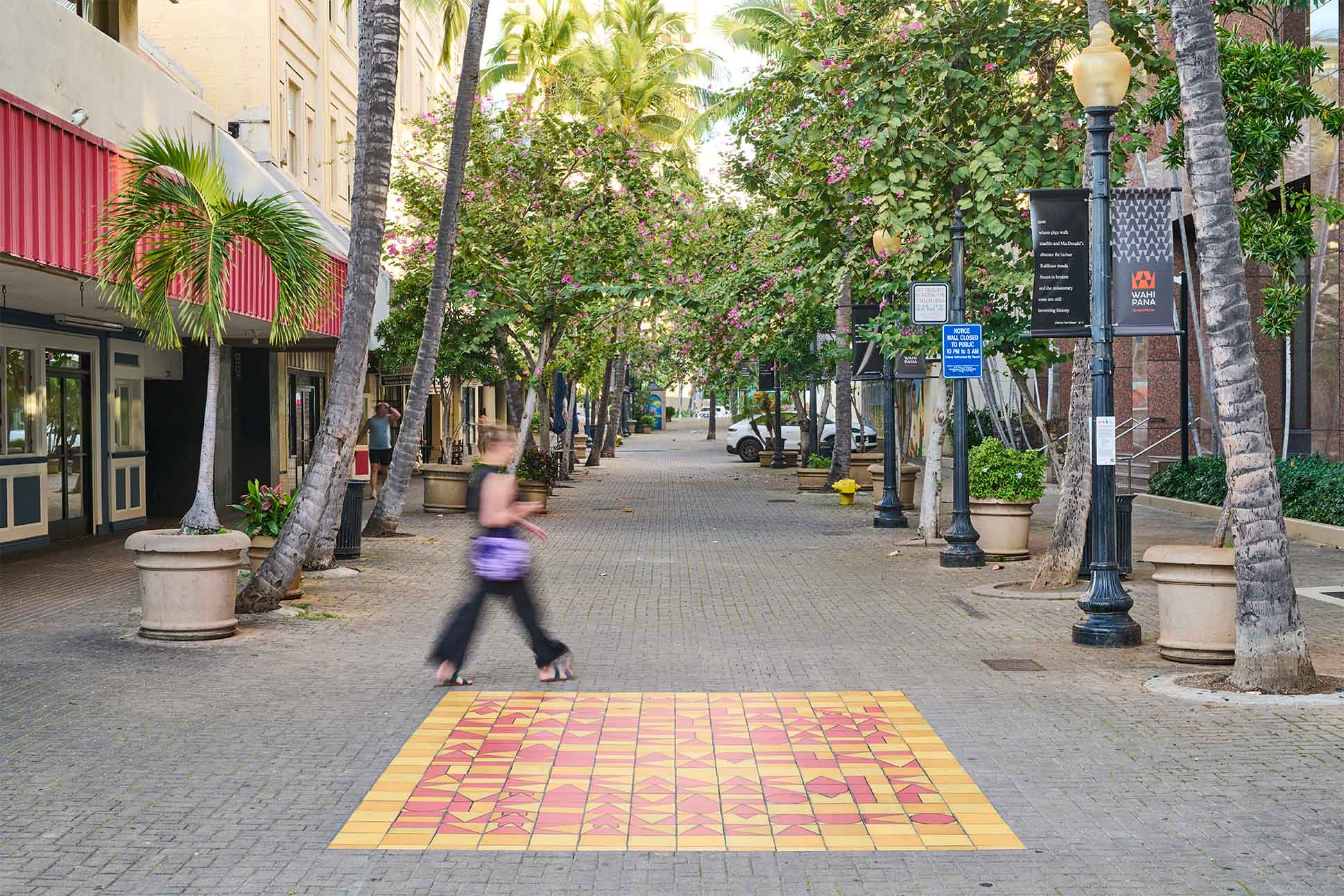
The multi-phase project, launched in 2025 and on view through 2028, marks a new kind of public art practice for Honolulu. From the beginning, curators Marion Cadora, project lead at the Mayor’s Office of Culture and the Arts, and Donnie Cervantes of Aupuni Space in Kaka‘ako and Pu‘uhonua Society, approached the project as a shift away from the complicated government procurement processes that typically saddle public art. With private funding from the Bloomberg Philanthropies’ Public Art Challenge came the freedom to look further and deeper into the creative community, to find artists at all stages of their careers who can respond uniquely and diversely to the stories of these places. It’s a subtle but profound breaking down of walls: public art as a means for voices that usually live outside the official narrative to step in and be heard.
At the heart of Wahi Pana is collaboration that feels less like a checklist and more like a conversation between artist, place, and story. “I would say [the mo‘olelo are] kind of a place of departure for the work, and it has become really individual to each site and each artist,” Cervantes says. These pieces, then, are not mere translations of old stories, but an invitation to question what we think we know about familiar places such as Koko Crater Botanical Garden or Hanauma Bay Nature Preserve. Whether you grew up here or are merely passing through, the project nudges you to consider your own place in the island’s layered histories.
The artists themselves reflect this layered approach. From established artists to emerging talents stepping into larger, community-rooted work for the first time, the resulting cohort forms a mosaic of perspectives and mediums—poetry, film, the abstract, the concrete—that connect us more deeply to the land.
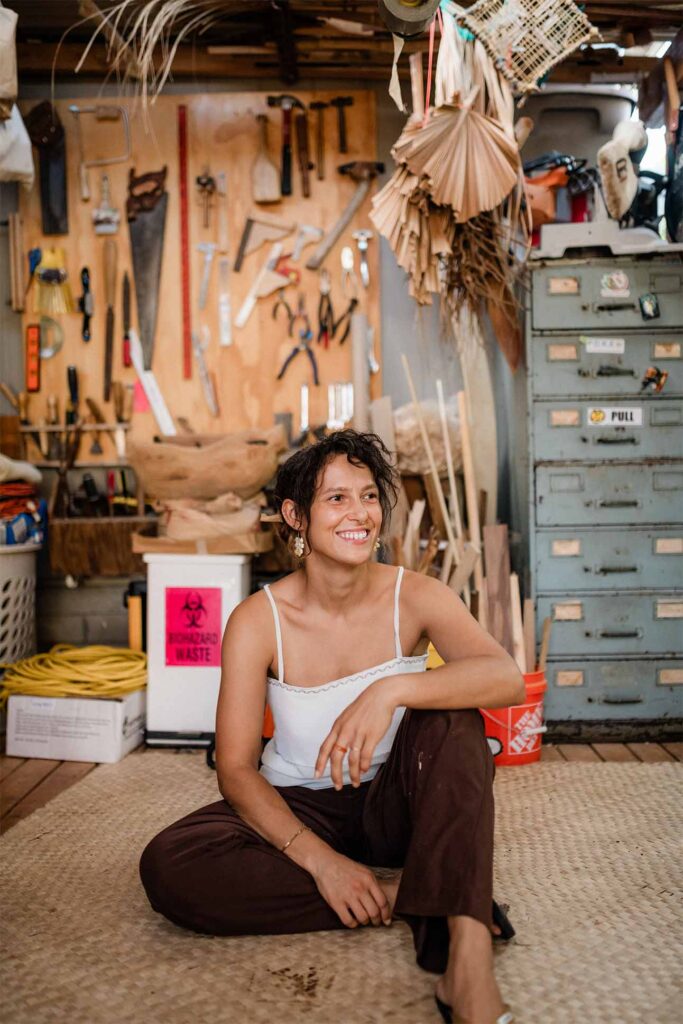

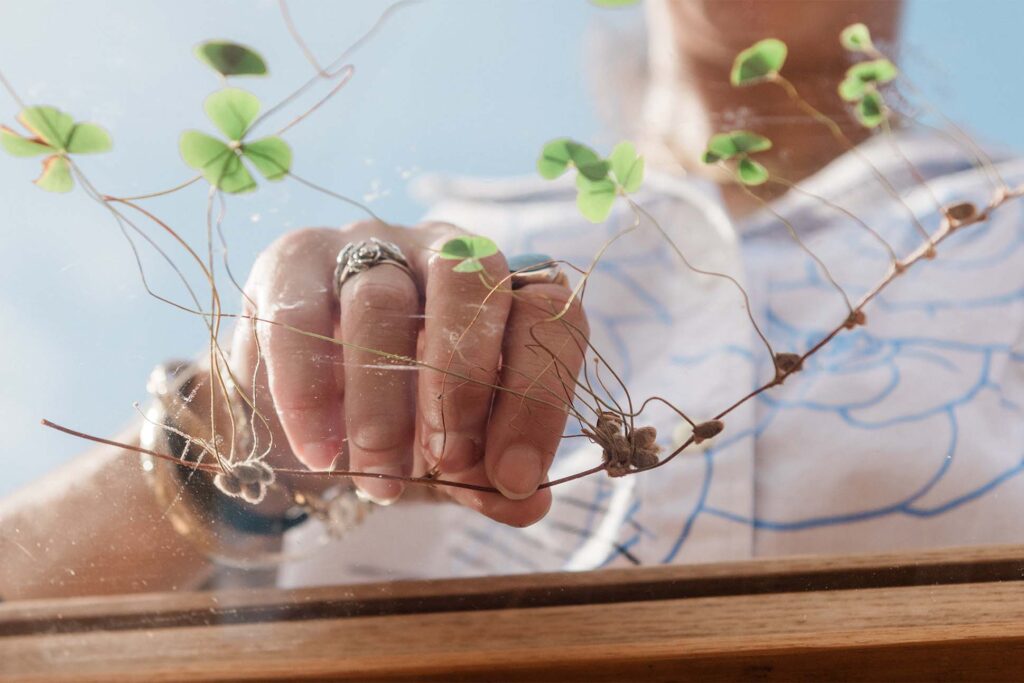
One such voice is Hawaiian artist Cory Kamehanaokalā Holt Taum, who brings to life the epic journey of Hi‘iakaikapoliopele through his vivid bus wrap project, Ka Pā‘ū Ehuehu o Hi‘iaka (The Animated Skirt of Hi‘iaka). This striking graphic vinyl wrap, installed on three city buses across O‘ahu, depicts flowing pā‘ū patterns that trace Hi‘iaka’s path across the island, mirroring TheBus routes. Taum’s work draws on the mo‘olelo of Hi‘iaka, a complex deity and protector, who embarks on a journey to retrieve Pele’s lover, Lohi‘au. The skirt worn by Hi‘iaka embodies mana (spiritual power) bestowed through her ancestors and the hand of Pele, which allows Hi‘iaka to both take and give life, reflecting a balance of destruction and regeneration, vitality, and death.
Taum’s artwork invites an estimated 45,000 daily bus riders to engage with this mo‘olelo through accessible technology. Passengers can scan QR codes to hear kau (poetic chants), mele (songs), and oli (chants) that honor the landscapes and ancestors Hi‘iaka encounters on her journey.
Ualani Davis is a fourth-generation Kaimukī resident, Native Hawaiian, and art educator whose cyanotype installation at Koko Crater Botanical Garden reimagines the garden not just as a landscape of biodiversity, but as a site of resistance and reclamation. Drawing on Queen Lili‘uokalani’s song “Ku‘u Pua I Paoakalani” and the garden Uluhaimalama that was planted as a symbol of hope following the 1893 overthrow of the Hawaiian Kingdom, Davis uses native plants like koa, kukui, and ‘ihi‘ihilauākea to commemorate three historic days of Hawaiian protest and celebration.

“I loved this idea that a garden could be a place of resistance,” Davis says. “That nurturing can be a form of resistance, and there are remnants of our ancestors’ resilience in the land even today.”
This was Davis’ first public art piece, and the experience taught her a great deal about the collaborative nature of such projects. She gained a deeper appreciation for the many people involved, and the dozens of hands, hearts, and minds that contribute to the public art seen throughout the city every day. Working with a skilled and supportive team revealed just how much effort goes into bringing these artworks to life.
“I hope it’s a piece that makes people curious and ask questions,” she says. “If a few more people learn the place names of the area, or look up the mo‘olelo of Kohelepelepe or Uluhaimalama, or even just listen to “Ku‘u Pua I Paoakalani”—I love the George Helm version—then I think it’s successful.”

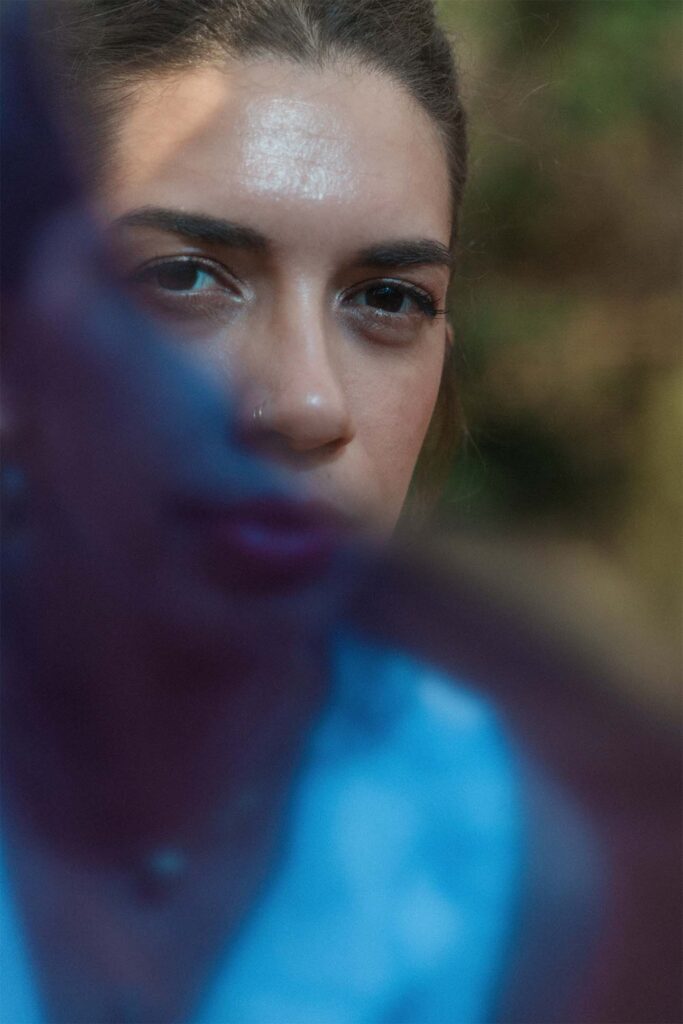

In a collaboration between Hawaiian wood carver Jordan Souza and sculptor Amber Khan, an installation at Hale‘iwa Beach Park features a series of carved wooden forms inspired by the story of Laniwahine, the mo‘o (lizard) water guardian of the sand-dune ponds Loko Ea and Uko‘a. The sculptures will be placed on the old pillars lining the park’s pathway, bringing new life and meaning to these somewhat neglected structures. Khan’s introduction to the story came through cultural advisor Paige Okamura, but her interpretation has grown through ongoing conversations, time spent in Waialua, and reflections on her own identity. She describes the mo‘olelo as revealing “a multidimensional place that carries innumerable timelines occurring concurrently.”
Throughout the process, Khan met with community groups to dive further into the questions—and answers—that arose as she sat more deeply with the story. Portraying the mo‘olelo in sculptural form presented challenges: How do you illustrate a shapeshifter? What does a wahi pana really carry?
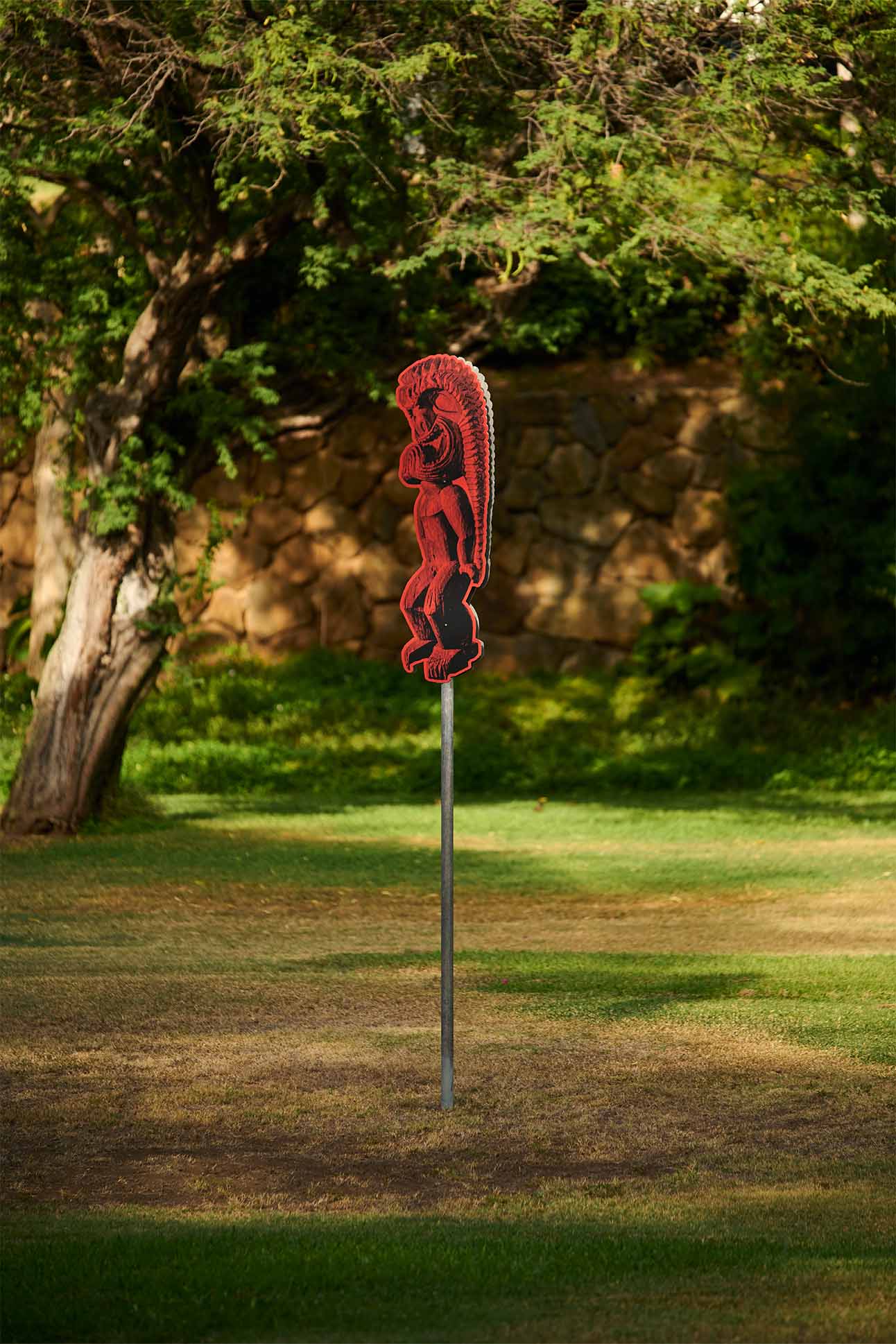
“I’ve had to unlearn a lot,” she says. “I find myself holding space for a more sustainable and dynamic kind of energy, one that cultivates mental astuteness and a grounded awareness of this place.”
For Khan, the carving process itself was a kind of storytelling. “As we carve, we reveal something in the wood that was already there—something that just needed an intermediary to bring it out,” she says. “The story of Hale‘iwa Beach Park and Laniwahine illuminates just one layer of the many roots and realities of this space.”
Rooted in city parks, botanical gardens, and open spaces, Wahi Pana doesn’t just decorate the land—it stirs it. Ultimately, the project is more than a series of installations. While the artworks themselves are temporary, the intention is lasting: to open portals into the living mo‘olelo embedded in the island’s landscapes. In a world full of noise, Wahi Pana asks us to listen carefully. Because here, stories live in the land. And when we open ourselves to them, the land becomes a storyteller too.

